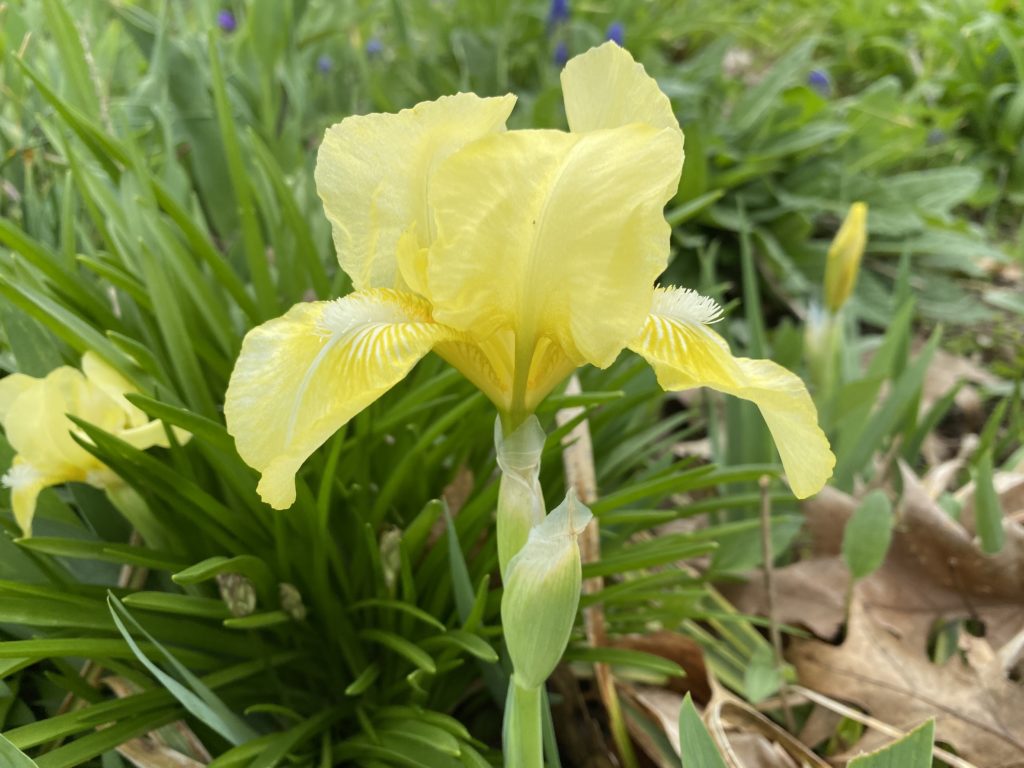
As more irises begin to appear in the garden, I’ve found another lost lady of garden writing, Ella Porter McKinney, who wrote Iris in the Little Garden (1927).
I will confess I didn’t find very much information about Ella.
Like other writers in The Little Garden series of books from the 1920s, she appears to have been involved with a local garden club—hers was in Madison, New Jersey—and the National Garden Club of America.
I did figure out after many searches that she got married in Kentucky in 1890 to Dr. C. S. McKinney so many of the old articles that mention her list her as Mrs. C. S. McKinney.
She appears to have moved to Madison, New Jersey shortly after getting married. She didn’t have any children, but I found a reference in a newspaper article about a brother and sister in California.
She died on January 31, 1944, aged 75.
And she loved irises! She had a garden full of irises and hybridized them.
From The Garden Magazine, June 1921, I found this reference to her. “Few of the other breeders of whom I wish to speak have sent varieties into commerce. Mrs. C. S. McKinney of Madison has one of the most beautiful if not the most beautiful iris gardens I have ever visited. It is exceedingly simple— pallida dalmatica predominates interspersed with varieties such as Mme. Chereau, Mrs. H Darwin, and Aurea. Among Mrs. McKinney’s many fine seedlings are Piquante, Simplicity, and Her Rival.” (The Historic Iris Preservation Society also has a reprint of this article on their website.)
There is a quote at the beginning of her book, Iris in the Little Garden, that tells the story of many a gardener.
“While we extend our admiration to all flowers, trees, and shrubs in our possession, we shall derive large gratification and advantage knowing everything there is to be known—the nomenclature, the botanical distinctions, the culture—of some particular species or family of plants.” – Dean Hole (Dean Hole is actually Dean Samuel Reynolds Hole, an Anglican priest, author, and horticulturist from the 19th century, and if I was looking for lost garden writers in general, I’d definitely go down a rabbit hole to find out more about him.)
Anyway, Ella loved irises, especially tall bearded irises, hybridized them, judged them at flower shows, and wrote a book about them.
And though she may have been lost to history, we’ve found her now, briefly, just as the bearded irises are beginning to open in our own gardens. Who knows? Perhaps one of us is growing an old iris handed down from one gardener to the next that could be traced back to Ella and her hybridizing?
(Dee and I talk about Ella in this podcast episode if you’d like to hear more.)


I do love bearded irises and only recently realized what a wonderful fragrance they have! I love all the color choices, and am satisfied with the length of time they bloom and the many blooms on a plant. My only struggle is to keep the tuber above ground and roots below when planting. If in a good spot, they will eventually get themselves where they need to be.
Thanks for making the time to record all the episodes before Dee’s trip instead of just skipping them. You two are the best! June
June,
Thanks for the kind words. And yes, Irises and other plants often adjust themselves to where they need to be.
Carol